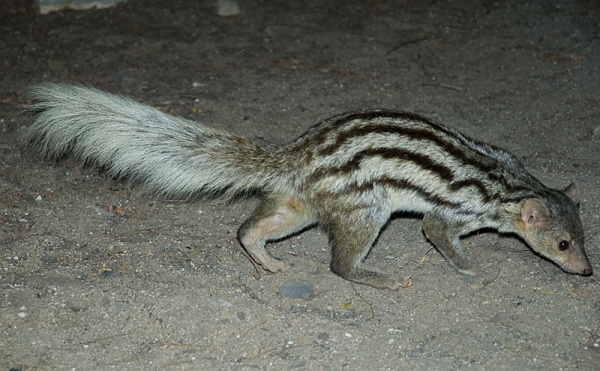Facts About Grandidier's mongoose
Grandidier's mongoose, also known as the giant-striped mongoose or Grandidier's vontsira, is a small carnivore native to a specific region in southwestern Madagascar, where it inhabits the spiny forest vegetation. Its coat is pale brown or gray with eight broad dark stripes running along its back and sides. This species is larger than its close relative, the broad-striped Malagasy mongoose, and is named in honor of Alfred Grandidier. Because of its restricted habitat on the western edge of the Mahafaly Plateau in Parc National de Tsimanampetsotsa, Grandidier's mongoose is considered one of the rarest carnivores in the world.
These animals are primarily nocturnal and crepuscular, being most active at night and during twilight. They typically live in pairs and have one offspring each summer. Their diet varies seasonally; they mainly consume invertebrates throughout the year but include small vertebrates in their diet during the wet season. Weighing between 1.1 to 1.3 pounds (500 to 600 grams), Grandidier’s mongoose forages by searching through ground litter and rock crevices.
Despite sharing their habitat with the fossa and the introduced Indian civet, Grandidier's mongoose has minimal overlap in range or diet with these species. Fossil records show that the region has experienced significant climate changes over the past 3,000 to 2,000 years, impacting the mongoose's distribution and prey availability. Grandidier's mongoose has adapted to these drier conditions, resulting in its limited range and reliance on smaller prey.
Noted for their vocalizations, Grandidier's mongoose often emits a cooing mew sound. They are also characterized as sociable and playful animals.
